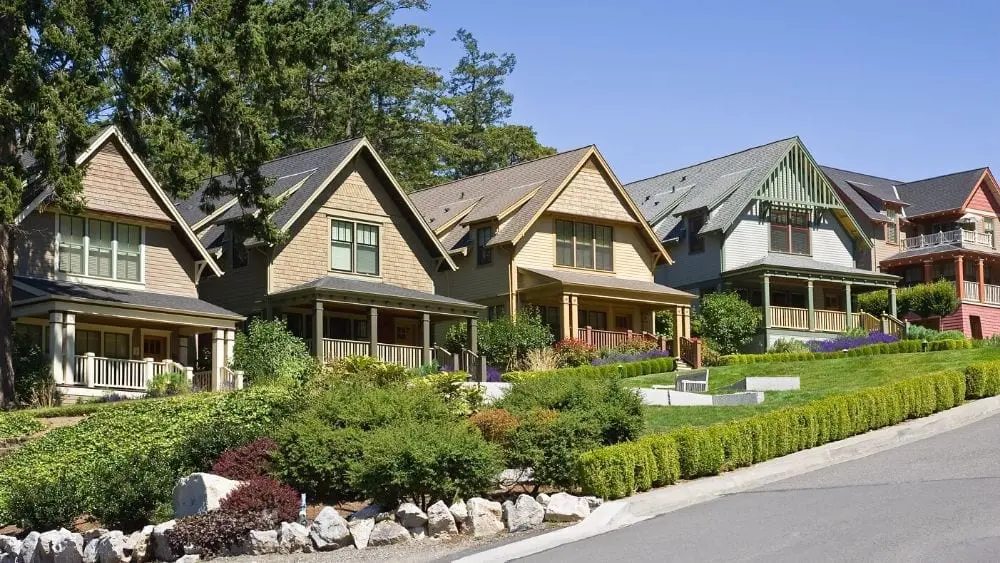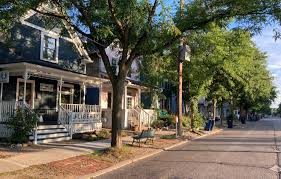Did you know that communities with strong neighborhood investments see a 20% decrease in crime rates? The power of community is undeniable. Investing in neighborhoods can bring about positive change, fostering safer, more vibrant environments. When we invest in our local areas, we create opportunities for everyone to thrive. From better schools to cleaner parks, the benefits ripple outwards.
This blog explores how community investments lead to lasting improvements. We’ll dive into real-life examples and practical tips. By the end, you’ll understand why focusing on your neighborhood is key to making a difference. Ready to discover the transformative power of community? Let’s get started!
Key Takeaways
-
Invest in Local Economies: Community investing can revitalize local economies by creating jobs and boosting small businesses.
-
Build Stronger Communities: Fostering social ties and collaboration can lead to safer, more connected neighborhoods.
-
Focus on Sustainability: Prioritize sustainable development and green spaces to enhance the quality of life and environmental health.
-
Learn from Success Stories: Look at global examples of successful community investments to understand best practices and innovative solutions.
-
Overcome Investment Obstacles: Address challenges in community investment through public-private partnerships and creative financing solutions.
-
Individual Opportunities: Even small investors can contribute to neighborhood transformation by supporting local projects and initiatives.
The Heart of Community Investing
Community Investing Defined
Community investing is a strategy aiming for both social and financial returns. It focuses on directing funds into local areas. These investments often target underserved communities.
The goal is to foster economic growth. By providing capital, community investing helps create jobs and improve living standards. It also supports small businesses and affordable housing projects.
Economic Development
Investing in neighborhoods channels capital into areas needing it most. This investment promotes economic development by funding local businesses and infrastructure.
For example, a community bank might offer loans to small businesses. These loans help businesses expand, hire more employees, and stimulate the local economy. Other investments might fund affordable housing projects, giving residents better living conditions.
Public-Private Partnerships
Public-private partnerships play a crucial role in community investing. These partnerships combine resources from both sectors to achieve common goals. Governments often provide incentives or subsidies to encourage private investment in underserved areas.
An example is the New Markets Tax Credit program, established in 2000. This program encourages private investment in low-income communities by offering tax credits. As a result, billions of dollars have flowed into these neighborhoods, creating jobs and boosting economic activity.
Innovative Financing Models
Innovative financing models are essential for successful community investing. These models offer new ways to attract and manage funds. Social impact bonds (SIBs) are one such model.
SIBs involve private investors funding social programs upfront. If these programs meet specific outcomes, the government repays the investors with interest. This model reduces financial risk for governments while addressing social issues effectively.
Another example is crowdfunding platforms tailored for community projects. These platforms allow individuals to invest small amounts in local initiatives. By pooling resources, communities can fund significant projects like parks or community centers.
Real-Life Impact
Real-life examples show how community investing transforms neighborhoods. In Cleveland, Ohio, the Evergreen Cooperatives project has created worker-owned businesses in low-income areas since 2008. These businesses provide stable jobs and reinvest profits locally.
In New York City, the East Harlem El Barrio Operation Fightback initiative has revitalized a once-neglected neighborhood since 1982. Investments in affordable housing and community services have improved residents’ quality of life significantly.
Revitalizing Local Economies
Economic Growth
Community investing stimulates local economic growth. It funds small businesses and startups. These businesses create jobs and attract customers. They also contribute to the local economy by purchasing supplies and services.
Local economies grow when people invest in their neighborhoods. Money spent locally circulates within the community. This circulation boosts income for residents. It also increases demand for local products and services.
Job Creation
Investing in communities leads to job creation. Small businesses hire local workers. They provide opportunities for people who may struggle to find employment elsewhere.
Job creation reduces unemployment rates. It also improves quality of life for residents. People with stable jobs can support their families and contribute to the community.
Benefits for Local Governments
Local governments benefit from community investing. Increased economic activity raises tax revenues. More businesses mean more property, sales, and income taxes.
Higher tax revenues allow governments to improve public services. They can invest in infrastructure, education, and healthcare. Better services attract more residents and businesses.
Reduced unemployment also benefits local governments. Fewer people rely on social services when they have jobs. This reduces government spending on welfare programs.
Example: Historic Fourth Ward
The Historic Fourth Ward in Atlanta, Georgia is a prime example of successful community investing. In the early 2000s, the area faced decline. High crime rates and abandoned properties plagued the neighborhood.
Investors saw potential in the Historic Fourth Ward. They funded parks, housing projects, and small businesses. The Atlanta BeltLine project played a significant role in this transformation.
The BeltLine turned old rail corridors into multi-use trails and parks. This attracted new businesses and residents to the area. Property values increased, boosting tax revenues for the city.
Crime rates dropped as more people moved into the neighborhood. New jobs emerged from the growing number of businesses. Today, the Historic Fourth Ward is a thriving community with vibrant local economy.
Building Stronger Communities
Social Dividends
Investing in neighborhoods yields significant social dividends. Affordable housing is a prime example. It ensures that residents have safe and stable places to live. This stability leads to improved health outcomes and educational achievements.
Access to healthcare is another critical benefit. Community clinics provide essential services. They offer preventative care, reducing emergency room visits. Both affordable housing and healthcare access enhance the quality of life for community members.
Sense of Belonging
Community investing fosters a sense of belonging. When people feel connected, they support one another. This mutual support creates a stronger, more resilient neighborhood.
Events like block parties and local festivals bring people together. These gatherings build relationships and trust among residents. A sense of belonging also reduces crime rates. People look out for each other and take pride in their community.
Supporting Small Businesses
Small businesses are the backbone of local economies. Investing in these businesses helps communities thrive. They create jobs and stimulate economic growth.
Programs that provide grants or low-interest loans are vital. These initiatives help entrepreneurs start or expand their businesses. Success stories include local bakeries, bookstores, and cafes. These establishments become community hubs where people gather and connect.
Creating Cultural Spaces
Cultural spaces contribute significantly to community well-being. Libraries, art centers, and theaters enrich lives by providing access to arts and education.
These spaces also serve as meeting points for diverse groups. They promote understanding and unity among residents. For instance, a community theater might host plays that reflect local history and culture. Such events foster pride and solidarity within the neighborhood.
Real-Life Examples
Several cities have successfully implemented these strategies. In New York City, the East Harlem Neighborhood Plan focuses on affordable housing and healthcare access. This initiative has improved living conditions for thousands of residents.
In Portland, Oregon, the Jade District revitalization project supports small businesses and cultural spaces. The project has created a vibrant, inclusive community where everyone feels welcome.
Emotional Impact
The emotional impact of these investments cannot be overstated. Knowing that your community cares about you is powerful. It instills hope and motivates individuals to contribute positively.
For example, children growing up in supportive neighborhoods are more likely to succeed academically and socially. Adults feel a greater sense of purpose and satisfaction when they see tangible improvements in their surroundings.
Sustainable Development and Green Spaces
Sustainable Practices
Integrating sustainable practices in community investing is essential. It ensures resources are used efficiently. Renewable energy sources like solar and wind power reduce dependence on fossil fuels. Water conservation techniques help preserve this vital resource. Recycling programs minimize waste and promote reuse.
Sustainable practices also include building energy-efficient homes. These homes use less electricity and water. They provide a healthier living environment for residents. Investing in sustainability creates long-term benefits for the whole community.
Green Spaces Benefits
Green spaces play a crucial role in improving residents’ quality of life. Parks, gardens, and tree-lined streets offer places for relaxation and recreation. They encourage physical activity, which promotes health and well-being.
These areas also foster social interaction among neighbors. Community events can be held in these spaces, strengthening bonds between residents. Green spaces improve air quality by reducing pollution.
Urban green spaces help combat the urban heat island effect. Trees and plants cool the environment through shade and transpiration. This cooling effect reduces energy costs for nearby buildings.
Economic Advantages
Sustainable development leads to long-term economic benefits. Energy-efficient buildings lower utility bills for residents and businesses. This savings can be reinvested into the community.
Green spaces increase property values in neighborhoods. People prefer living near parks and gardens. Higher property values generate more tax revenue for local governments. This revenue can be used to fund public services and infrastructure projects.
Local economies benefit from sustainable practices too. Jobs are created in renewable energy sectors, construction of green buildings, and maintenance of green spaces. These jobs provide stable employment opportunities for residents.
Environmental Impact
Sustainable development has significant environmental benefits. Reducing reliance on fossil fuels lowers greenhouse gas emissions. This helps combat climate change and protects natural ecosystems.
Water conservation efforts ensure that water resources remain available for future generations. Recycling programs reduce the amount of waste sent to landfills, decreasing environmental pollution.
Biodiversity is supported by creating green spaces within communities. Urban wildlife finds habitats in parks and gardens, maintaining ecological balance.
Community Involvement
Community involvement is key to successful sustainable development. Residents should participate in planning and implementing sustainable projects. Their input ensures that projects meet the community’s needs.
Volunteer programs can support maintenance of green spaces and recycling initiatives. Educational workshops raise awareness about sustainability practices among residents.
Success Stories from Around the Globe
Medellín, Colombia
Medellín transformed its neighborhoods through community investment. In the early 2000s, the city was infamous for crime. Local government and residents collaborated to improve public spaces and infrastructure. The construction of libraries, parks, and metro systems helped reduce crime rates. By 2013, Medellín became a model for urban renewal.
Curitiba, Brazil
Curitiba invested in sustainable development. The city focused on public transportation and green spaces. In the 1970s, they introduced an efficient bus system. This reduced traffic congestion and pollution. The creation of numerous parks also improved residents’ quality of life. Curitiba now serves as a global example of smart urban planning.
Detroit, USA
Detroit faced economic decline in the late 20th century. Community leaders initiated projects to revitalize neighborhoods. The Detroit Future City plan, launched in 2013, aimed to repurpose vacant land. Residents planted community gardens and built affordable housing. These efforts attracted new businesses and residents.
Copenhagen, Denmark
Copenhagen focused on sustainable living. The city invested in cycling infrastructure and renewable energy. Over 50% of residents now commute by bike. The introduction of wind turbines has significantly reduced carbon emissions. These initiatives have made Copenhagen one of the most livable cities globally.
Kigali, Rwanda
Kigali underwent significant transformation post-1994 genocide. The government prioritized cleanliness and orderliness. Community members participated in monthly clean-up drives called Umuganda. They also invested in affordable housing projects. These efforts turned Kigali into one of Africa’s cleanest cities.
Tokyo, Japan
Tokyo tackled disaster preparedness through community investment. After the 2011 earthquake, the city improved its infrastructure. Residents participated in regular disaster drills. Local authorities built earthquake-resistant buildings and emergency shelters. These measures enhanced safety and resilience.
Cape Town, South Africa
Cape Town addressed water scarcity with innovative solutions. During the 2018 drought, local communities worked together to conserve water. They installed rainwater harvesting systems and promoted water-saving practices. These efforts prevented a complete water crisis and raised awareness about resource conservation.
Seoul, South Korea
Seoul revitalized its Cheonggyecheon stream area in the early 2000s. The government removed an old highway to restore the natural stream. This project created green spaces and improved air quality. It also boosted local businesses and tourism.
Common Factors
Several common factors contribute to successful community investments:
-
Strong leadership: Effective leaders guide projects and inspire participation.
-
Community involvement: Resident engagement ensures projects meet local needs.
-
Sustainable practices: Long-term planning focuses on environmental and social sustainability.
-
Innovation: Creative solutions address unique challenges.
Overcoming Obstacles in Community Investment
Funding Gaps
Funding gaps are a significant challenge. Many community projects lack sufficient financial resources. This can delay or even halt progress. In 2019, a study by the Urban Institute found that funding shortfalls were the most common issue in community investment projects.
e communities struggle to attract investors. Limited economic activity can make neighborhoods less appealing for investment. This creates a cycle where lack of funding leads to stagnation.
Regulatory Hurdles
Regulatory hurdles also pose challenges. Complex zoning laws and building codes can slow down projects. For instance, New York City has strict regulations that often require multiple permits and approvals.
These regulations can be confusing and time-consuming. They may deter potential investors who prefer simpler processes. Local governments sometimes lack the resources to streamline these regulations.
Public-Private Partnerships
Public-private partnerships (PPPs) offer a solution. These partnerships combine public sector support with private sector efficiency. They can provide the necessary funding and expertise for community projects.
A successful example is the Atlanta BeltLine project. This PPP transformed old railway corridors into parks and trails, boosting local economy and quality of life.
Governments can offer incentives to attract private partners. Tax breaks, grants, and streamlined approval processes can make projects more appealing.
Community Engagement
Community engagement is crucial for success. Projects must address local needs and gain residents’ support. Engaging the community ensures that investments are relevant and sustainable.
Involving residents in planning fosters a sense of ownership. This can lead to better maintenance and long-term success of projects. Town hall meetings, surveys, and focus groups are effective ways to gather input.
Leveraging Local Resources
Communities can leverage local resources to overcome obstacles. Local businesses, nonprofits, and volunteers can contribute valuable assets. For example, local contractors might offer discounts or pro bono services.
Nonprofits often have deep connections within the community. They can mobilize volunteers and provide additional funding sources. Volunteers bring passion and commitment, which can drive projects forward.
Building Trust
Building trust between stakeholders is essential. Transparency in decision-making builds confidence among residents and investors alike. Clear communication about goals, progress, and challenges helps maintain trust.
Trust encourages more people to get involved. It creates a positive feedback loop where successful projects lead to increased investment and engagement.
Innovations in Community Financing
Pay-for-Success Model
Pay-for-success is a new financing model. It links funding to measurable outcomes. Governments and private investors fund social programs upfront. They get paid back only if the programs succeed. This model reduces financial risk for the government. It also encourages effective solutions.
In 2012, New York City launched the first pay-for-success project in the U.S. The program aimed to reduce recidivism among jailed adolescents. Investors funded the initiative. They would be repaid if recidivism rates dropped. The program showed mixed results but highlighted the potential of this model.
Impact Investing
Impact investing seeks both financial returns and social impact. Investors fund projects that benefit communities. These can include affordable housing, education, and healthcare. Unlike traditional philanthropy, impact investing expects a return on investment.
The Global Impact Investing Network (GIIN) reports rapid growth in this sector. In 2020, impact investments totaled $715 billion globally. This shows increasing interest in profit-with-purpose models.
Role of Technology
Technology plays a crucial role in community investments. Crowdfunding platforms like Kickstarter and GoFundMe help raise funds for local projects. These platforms connect small investors with community initiatives.
Blockchain technology offers transparency and security in transactions. It ensures funds are used as intended. Smart contracts automate funding processes, reducing administrative costs.
In Kenya, M-Pesa revolutionized mobile banking. It allows people to transfer money using their phones. This innovation helps small businesses access capital easily.
Addressing Societal Challenges
Innovative financing addresses various societal challenges effectively:
-
Affordable Housing: Pay-for-success models fund housing projects that reduce homelessness.
-
Education: Impact investing supports schools in underserved areas.
-
Healthcare: Technology-driven investments improve access to medical services.
For example, Social Finance UK launched a project to support homeless people in London. Private investors funded housing and employment services for the homeless. The project aimed to reduce long-term homelessness and its associated costs.
Opportunities for Individual Investors
Participation Platforms
Individuals can invest in communities through various platforms. Crowdfunding sites like Kickstarter and GoFundMe allow people to support local projects directly. Real estate investment platforms such as Fundrise and RealtyMogul enable small investors to fund property developments in specific neighborhoods.
Local credit unions also offer community investment options. These institutions often provide loans to local businesses, which helps stimulate the economy. By joining a credit union, individuals can indirectly support their community’s growth.
Financial Returns
Investing in communities can yield financial returns. Real estate investments may appreciate over time, providing capital gains. Rental properties can generate regular income through tenant payments. Some community investments offer tax incentives, which can enhance overall returns.
ial bonds are another option. These bonds finance projects with social benefits, like affordable housing or education programs. Investors receive interest payments while contributing to societal improvements.
Social Returns
Community investing also offers social returns. Improved neighborhoods lead to better living conditions for residents. Investments in local businesses create jobs and reduce unemployment rates. Enhanced public services, such as parks and schools, benefit everyone in the area.
ial returns go beyond tangible improvements. Stronger communities foster a sense of belonging and security among residents. This can lead to reduced crime rates and increased civic engagement.
Evaluating Opportunities
Evaluating community investment opportunities is crucial. First, research the project’s goals and objectives. Understand what the initiative aims to achieve and how it plans to do so. Look for clear, measurable outcomes.
Second, assess the financial health of the organization behind the project. Review their past performance and financial statements. Ensure they have a solid track record of managing funds effectively.
Third, consider the potential risks involved. All investments carry some level of risk, but community investments might have unique challenges. Evaluate factors like market conditions, regulatory changes, and local economic trends.
Finally, seek advice from financial advisors who specialize in community investments. They can provide insights into the viability of different opportunities and help you make informed decisions.
The Future of Neighborhood Transformation
Emerging Trends
Community investing is evolving. More people are seeing the benefits of putting money into their neighborhoods. This trend will likely continue.
Green spaces are becoming more popular. People want parks and gardens in their areas. These spaces improve mental health and bring people together.
Affordable housing is another focus. Investors are creating more homes that people can afford. This helps reduce homelessness and improves quality of life.
Impact of Technology
Technology is changing how we invest in communities. Smart city technology is making neighborhoods safer and more efficient. For example, smart lighting can reduce energy use and improve safety.
Drones are being used for surveillance and delivery services. They help with security and make deliveries faster.
Blockchain technology ensures transparency in investments. It tracks where money goes and how it is used, building trust among investors.
Policy Changes
Government policies play a big role in neighborhood transformation. New laws can encourage investment in underserved areas. Tax incentives can attract investors to these neighborhoods.
Zoning laws are also important. They determine what can be built and where. Changes in zoning laws can lead to more mixed-use developments, combining residential, commercial, and recreational spaces.
Importance of Collaboration
Collaboration among stakeholders is crucial for sustainable change. Local governments, businesses, and residents must work together. Each group brings something valuable to the table.
Residents know what their community needs most. Businesses provide funding and resources. Local governments create policies that support development.
Successful projects often involve public-private partnerships. These partnerships combine the strengths of both sectors to achieve common goals.
Real-Life Examples
Detroit has seen significant transformation through community investment. After facing economic decline, the city focused on revitalizing neighborhoods. Public-private partnerships played a key role in this process.
In San Francisco, technology companies have invested in affordable housing projects. This helps address the city’s housing crisis while benefiting the tech industry by providing homes for employees.
Closing Thoughts
Investing in communities isn’t just about money; it’s about creating lasting change. By revitalizing economies, building stronger neighborhoods, and focusing on sustainability, you can make a real difference. The success stories from around the world show what’s possible when we come together.
Don’t just sit on the sidelines. Get involved in community investment and be part of the transformation. Your efforts can drive innovation and open up new opportunities for everyone. Let’s shape the future of our neighborhoods together. Ready to make an impact? Join us now!
Frequently Asked Questions
What is community investing?
Community investing directs capital to underserved areas. It aims to revitalize local economies and build stronger communities.
How does community investment benefit neighborhoods?
It boosts local economies, creates jobs, and improves living conditions. It also fosters a sense of belonging and pride among residents.
Can individual investors participate in community investment?
Yes, individual investors can participate. There are various platforms and funds designed for personal investments in community projects.
What are some success stories in community investing?
Cities like Detroit and Baltimore have seen significant improvements. Local businesses thrive, and crime rates drop due to effective community investments.
What challenges do community investments face?
Challenges include lack of funding, bureaucratic red tape, and resistance from local stakeholders. Overcoming these requires collaboration and innovative solutions.
Are there sustainable development options in community investing?
Yes, sustainable development is a key focus. Projects often include green spaces, renewable energy initiatives, and eco-friendly buildings.
What is the future of neighborhood transformation through community investing?
The future looks promising with advancements in technology and increased awareness. Community investments are set to drive positive change globally.
 Subscribe to our podcast
Subscribe to our podcast 




